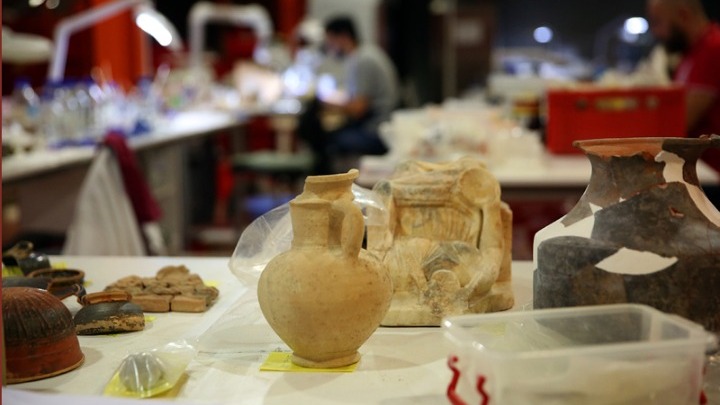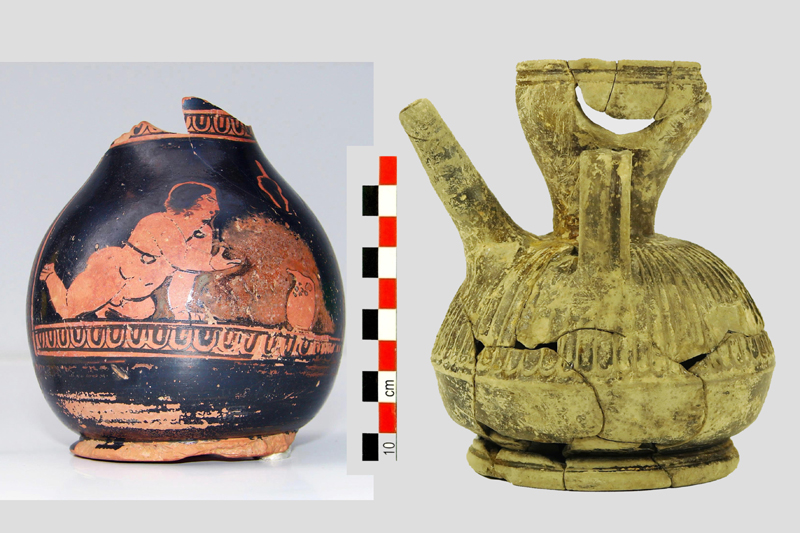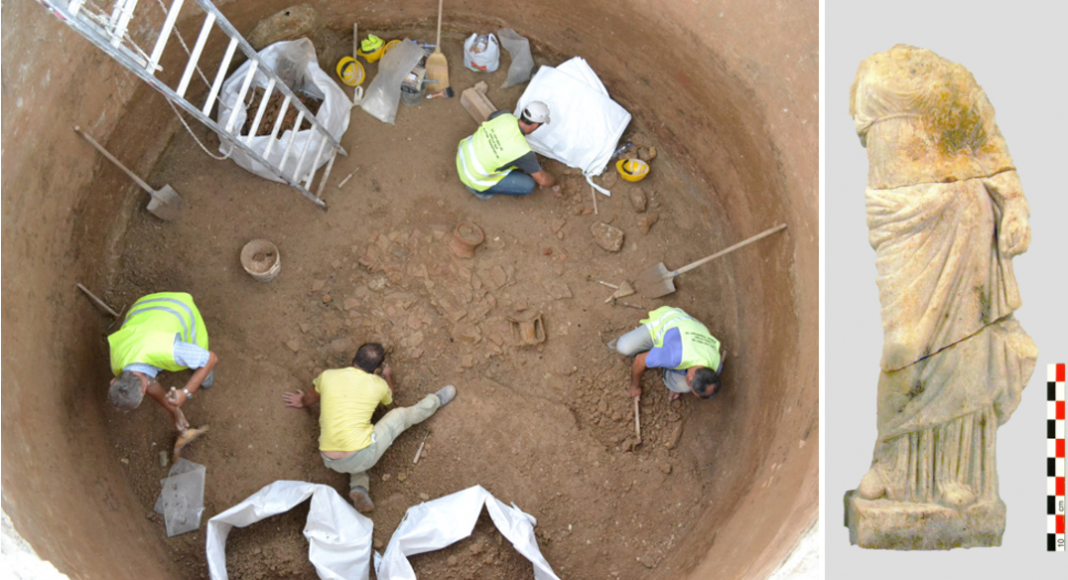Greek archaeologists have unearthed an ancient aqueduct and thousands of artifacts dating from Hellenistic and Roman times during the excavations for the expansion of the Athens metro line to Pireaus.
More than 4,000 artifacts have been preserved with 1,400 utensils and 1,300 rare wooden objects which come from houses, household items, furniture and tools.

Some of the artifacts will frame the permanent exhibition that will be set up in the metro station called “Municipal Theater” in Piraeus, which is currently under construction.
The exhibition will include, in addition to ancient objects, representations of ancient tanks and wells, a model copy of the aqueduct, as well as an authentic pebble floor from the Hellenistic era that was found during the excavations.

“There is a large volume of ancient material, precisely because the excavation was the largest ever conducted in Piraeus,” archaeologist George Peppas told Athens-Macedonia News Agency (AMNA).
“The uncovering of the aqueduct is very important,” Peppas added. “By excavating 55 meters of its central tunnel at the ‘Municipal Theater’ station, we were able to make a timeline… from its construction to its abandonment. We believe that the water came from Athens through the Long Walls and specifically from the hill of Ardittos.”

The artifacts have been temporarily moved to a Piraeus workshop, called Xylapothiki, where archaeologists work to identify and classify them. Visitors can visit Xylapothiki and get an insight into the fascinating work being done there.
“It is a unique example in Greece of an exhibition that works in parallel with an open maintenance workshop. The visitor can watch the work from the lofts every day during the hours we work,” Peppas told AMNA.

